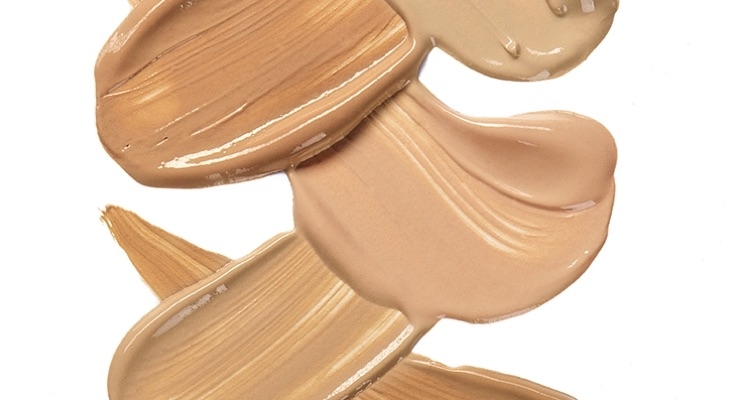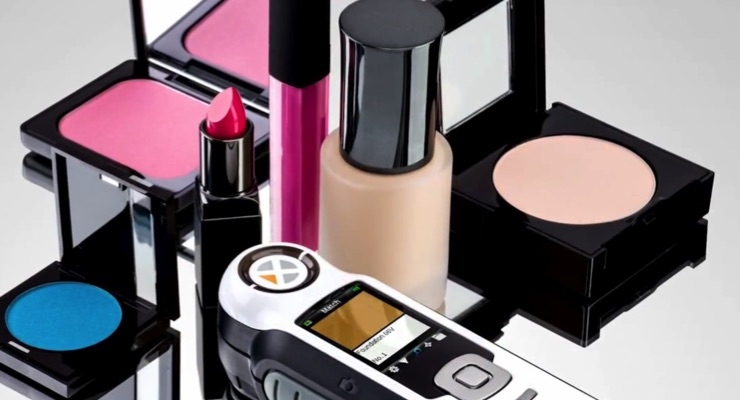Shoshana Burgett05.08.17
In a recent X-Rite Pantone survey of nearly 300 consumers, we learned that buyers of cosmetic products had the most difficulty matching or coordinating skin tone when purchasing foundation, including beauty balm, color correcting creams, concealers, tinted moisturizers, and lipsticks. We also learned that consumers have a high propensity to return products that do not meet their skin-tone-matching expectations, whether the products were purchased in-store or online.
Go into any retail store and you can see that cosmetics packaging is an integral part of the consumer experience. The package represents the brand and tells the story. Packaging also play a significant role in enticing consumers to purchase by helping them choose the right product or shade.
Purchased frequently, foundation, beauty balm and color correcting creams are all high cost items compared to other cosmetics like eyeshadow and lipstick. Consumers stated these products are difficult to match with their skin tone using the color sample on the package.
Our survey showed that foundation color accuracy concerns ranked high among our respondents, with 71% reporting that they don’t trust the color sample on the package at all, or only somewhat trust it.
When the packaging doesn’t reflect the true color of the product, consumers are likely to return products or move on to other brands. This is costly, both for a retailer’s bottom line and overall customer loyalty and satisfaction. But how can brands effectively address these issues?
Here are 5 questions brands should be asking themselves:
Brand managers can work with their packaging design teams and suppliers early in the development of a new product to better understand how color reacts with specific packaging materials. Quality control and reporting software can provide more accountability in production and create new discussions with suppliers to improve overall processes, time to market and rejection rates. The result - packaging decisions can then be made to ensure the highest-level of color consistency between the final packaging and the product.
As brand managers look to improve color alignment between the physical product and packaging, they should also consider the mobile channel.
In our survey, we found that more than 90% of respondents would be extremely or moderately likely to use a smartphone or tablet app to assist them in choosing the right cosmetics colors, and more than 60% would use such an app at least a few times per week. Incorporating new color technology into mobile retail applications can allow consumers to search for the perfect foundation based on their skin tones.
Taking this one step further, emerging technology will allow consumers to use their smartphones with a color calibration card to measure the color of any item they want to match – say a dress – and find a matching lipstick or harmonizing eye shadow.
Managing color across a range of materials, from product to primary packaging to secondary packaging to mobile applications, is a challenge that can be solved with the help of technology. Modern color measurement and management technologies can provide consumer-packaged goods (CPG) companies with the ability to address these challenges head on, with excellent results. The good news is that implementation is not difficult and is more affordable than ever before, even for smaller retailers and brands.
With improved color, consumers can become more engaged with the package and brand. Imagine your customer posting an Instagram picture of her new foundation and the packaging color is an exact match to her skin tone.
Now, imagine that same women posting a picture of her new shoes and matching lipstick. What value does this credibility bring to your brand?
ABOUT THE AUTHOR
Go into any retail store and you can see that cosmetics packaging is an integral part of the consumer experience. The package represents the brand and tells the story. Packaging also play a significant role in enticing consumers to purchase by helping them choose the right product or shade.
Purchased frequently, foundation, beauty balm and color correcting creams are all high cost items compared to other cosmetics like eyeshadow and lipstick. Consumers stated these products are difficult to match with their skin tone using the color sample on the package.
Our survey showed that foundation color accuracy concerns ranked high among our respondents, with 71% reporting that they don’t trust the color sample on the package at all, or only somewhat trust it.
When the packaging doesn’t reflect the true color of the product, consumers are likely to return products or move on to other brands. This is costly, both for a retailer’s bottom line and overall customer loyalty and satisfaction. But how can brands effectively address these issues?
Here are 5 questions brands should be asking themselves:
- Are you identifying the spectral color data of your foundation, lipstick, eye shadow, etc., during R&D?
- How are you communicating product color specifications to all your design teams and packaging suppliers? Are you communicating specifications digitally, compared to a physical sample? Physical samples are subjective and everyone views and interprets what they see differently.
- Are your designers using the right tools to understand how color will appear on different packaging materials and printing processes?
- Are your designers working with your suppliers to understand how specified colors will look on the packaging material and discussing which adjustments need to be made to align the color and the material?
- Do you have a process in place to monitor packaging quality in real-time, during the production process, across all suppliers? Do you collaborate with your procurement and quality teams to evaluate reporting software?
Brand managers can work with their packaging design teams and suppliers early in the development of a new product to better understand how color reacts with specific packaging materials. Quality control and reporting software can provide more accountability in production and create new discussions with suppliers to improve overall processes, time to market and rejection rates. The result - packaging decisions can then be made to ensure the highest-level of color consistency between the final packaging and the product.
As brand managers look to improve color alignment between the physical product and packaging, they should also consider the mobile channel.
In our survey, we found that more than 90% of respondents would be extremely or moderately likely to use a smartphone or tablet app to assist them in choosing the right cosmetics colors, and more than 60% would use such an app at least a few times per week. Incorporating new color technology into mobile retail applications can allow consumers to search for the perfect foundation based on their skin tones.
Taking this one step further, emerging technology will allow consumers to use their smartphones with a color calibration card to measure the color of any item they want to match – say a dress – and find a matching lipstick or harmonizing eye shadow.
Managing color across a range of materials, from product to primary packaging to secondary packaging to mobile applications, is a challenge that can be solved with the help of technology. Modern color measurement and management technologies can provide consumer-packaged goods (CPG) companies with the ability to address these challenges head on, with excellent results. The good news is that implementation is not difficult and is more affordable than ever before, even for smaller retailers and brands.
With improved color, consumers can become more engaged with the package and brand. Imagine your customer posting an Instagram picture of her new foundation and the packaging color is an exact match to her skin tone.
Now, imagine that same women posting a picture of her new shoes and matching lipstick. What value does this credibility bring to your brand?































